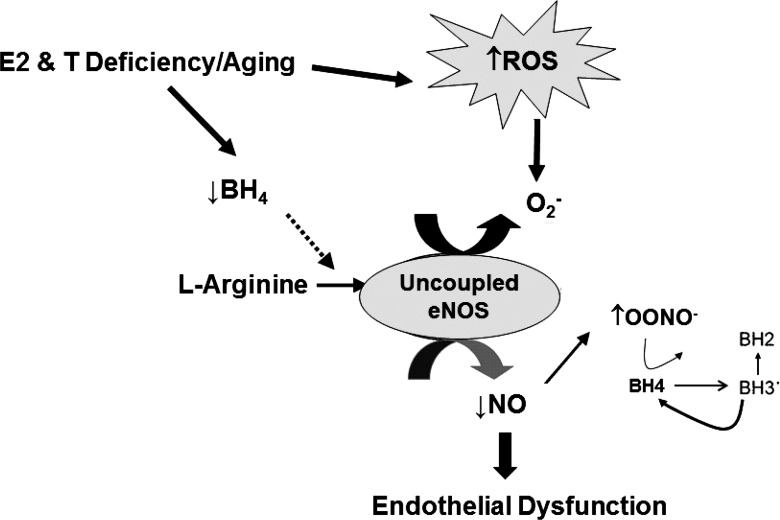Fig. 2.
Working model of two of the key underlying mechanisms by which declines in sex hormones with the menopause transition in women, and andropause in men, contributes to age-associated endothelial dysfunction. Estrogen and testosterone deficiency, coupled with aging, results in an overproduction of reactive oxygen species (ROS) due to the loss of the antioxidant properties of estrogen and testosterone. Sex hormone deficiency may also reduce tetrahydropbiopterin (BH4) synthesis, causing endothelial nitric oxide (NO) synthase (eNOS) to uncouple and produce superoxide () instead of NO. Collectively, the increase in ROS would inactivate NO and increase the production of peroxynitrite (ONOO−), which would oxidize BH4 and cause further uncoupling of eNOS and increased production, resulting in reduced NO bioavailability and impaired endothelial function.

